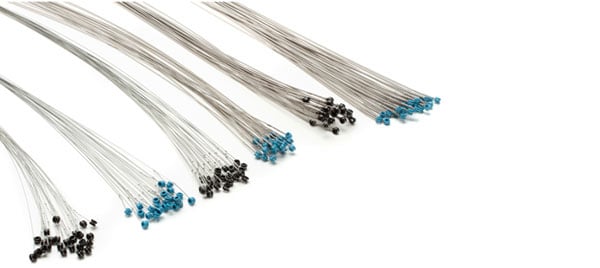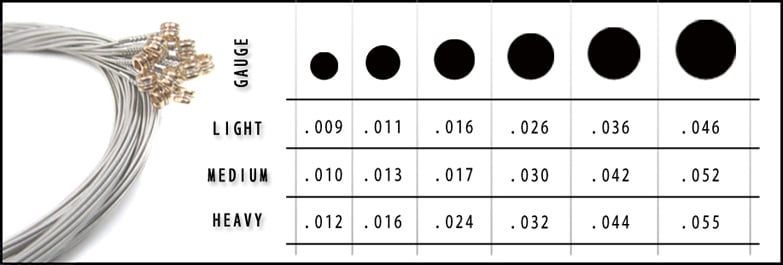- Home
- Instruments
- Gear
- Recording
- Lessons
- Reviews
- Blog

Picking the right guitar for your kid is important. If you need more info on how to find the best one, check out our article here. However, finding a good guitar is only a part of the equation. The other part, which is just ase important, is the choice of appropriate strings.
Even when you look at regular guitars, there will be a wide range of different strings you can get. These will vary not only in terms of thickness but also design and materials used. A set of strings has the ability to completely change the nature of a guitar, in a good way, but in a bad way as well. Choosing the right set of strings is that much more important when we’re talking about kids guitars.
So here we are, planning to give you some essential info regarding guitar strings in general, and how your choice of strings can impact your kid’s playing experience. With that said, let’s start from the basics.

Before we go into different types of strings, and materials used to make them, we need to address the difference between short scale and standard scale guitars. If you have a small child, you’re probably going to get a guitar with as shorter scale.
These instruments are smaller and therefore much easier for kids to play. If you’re shopping for guitar strings to use on this type of guitar, you need to get a high tension string set. If you try to achieve a standard pitch on a short scale guitar using regular strings, those strings will be under very low tension. This makes it harder to get the guitar in tune, but also harder to play as well. High tension strings are designed to compensate for that lack of scale length, and they allow you to tune a short scale guitar just like you would a regular one.

Next thing to consider is the string gauge. There are several different standard string gauges currently available. They range from very light to very heavy gauge. Naturally, the difference is in thickness. Any beginner, young and old, will have calluses from playing guitar when they first start. That’s completely normal.
However, when we’re talking about little kids, using a heavy gauge string set might prove to be a bit too much for their soft fingers. That’s why it’s generally recommended to use a light or super light gauge. This way you increase the playability of the instrument, and allow your kid to use the guitar with comfort.
You generally don’t lose any sonic qualities with light gauge strings. They even sound a lot crispier than regular or heavy gauge sets. You will get a lot of trebles and higher frequencies in general, which is great for practice as every mistake is heard loud and clear.
 There’s a bunch of different string designs out there. Some of them are practical, while others don’t add anything in terms of performance. One design that comes to mind, which could help your kid get used to guitars quicker are flat wound strings. A standard string has a steel core that is then wound with strains made of bronze or other materials. The result is a ribbed surface that tends to be harsh on the fingers.
There’s a bunch of different string designs out there. Some of them are practical, while others don’t add anything in terms of performance. One design that comes to mind, which could help your kid get used to guitars quicker are flat wound strings. A standard string has a steel core that is then wound with strains made of bronze or other materials. The result is a ribbed surface that tends to be harsh on the fingers.
Flat wound strings don’t have a surface texture but are instead really smooth. These strings are generally more expensive, but they might be a good way to get your kid used to guitar strings.
When people first start playing guitar, there will be pain and calluses for the first few weeks. Naturally, this is something an adult deals with much better than a child. Because of that, you should do whatever you can to make things easier for your kid. Light gauge strings, along with flat wound design might prove to be the best decision.
Once your child gets used to the feel of guitar strings, you can start experimenting with different gauges. Making that initial period as painless as possible is a great way to help your kid out. Doing some research on different strings is definitely worth the effort. A recommended place to look for strings is Just Strings, the amount of options you have there will suffice for years of testing.

TJ from Brum (England) says
Wouldn’t flat-wound strings be more likely to actually give cuts to the kids’ fingertips? – I mean, with round-wound strings, the tiny bumps of the round-winding are intermittent not a constant line, also are likely to land in a slightly different place along the string-line on the finger each time the finger’s placed, but with flat-would strings, the string makes a constant-line contact with the finger that doesn’t vary.